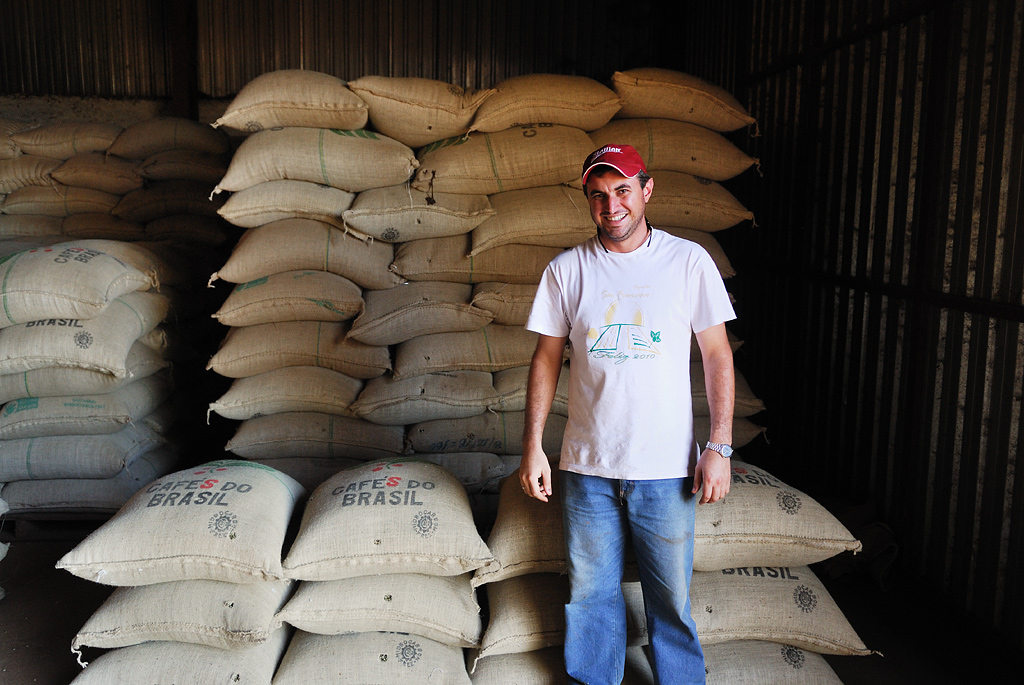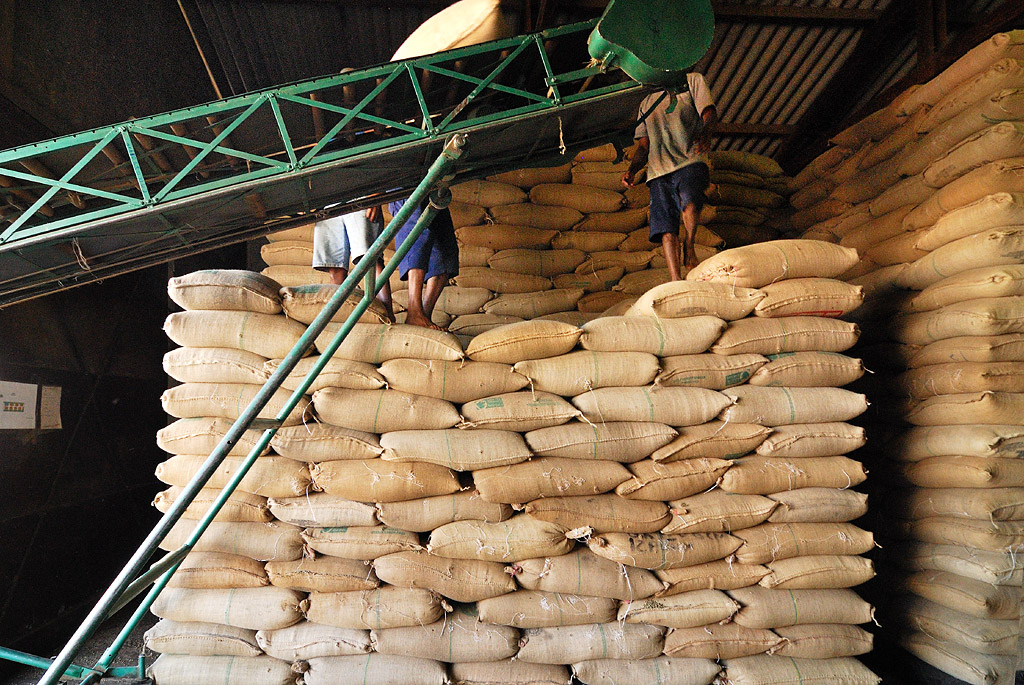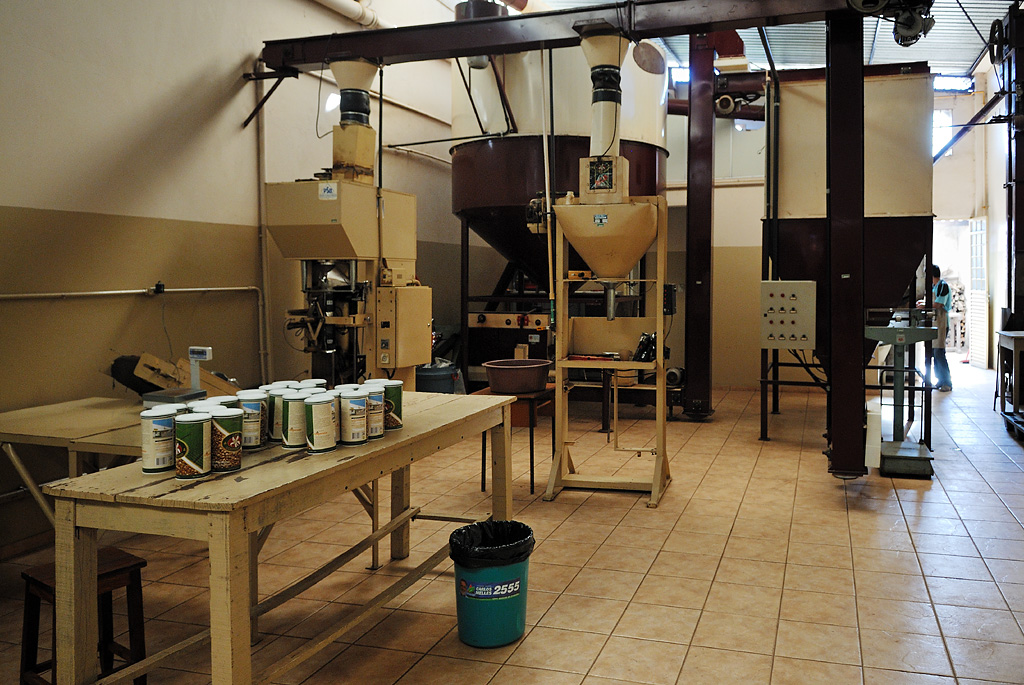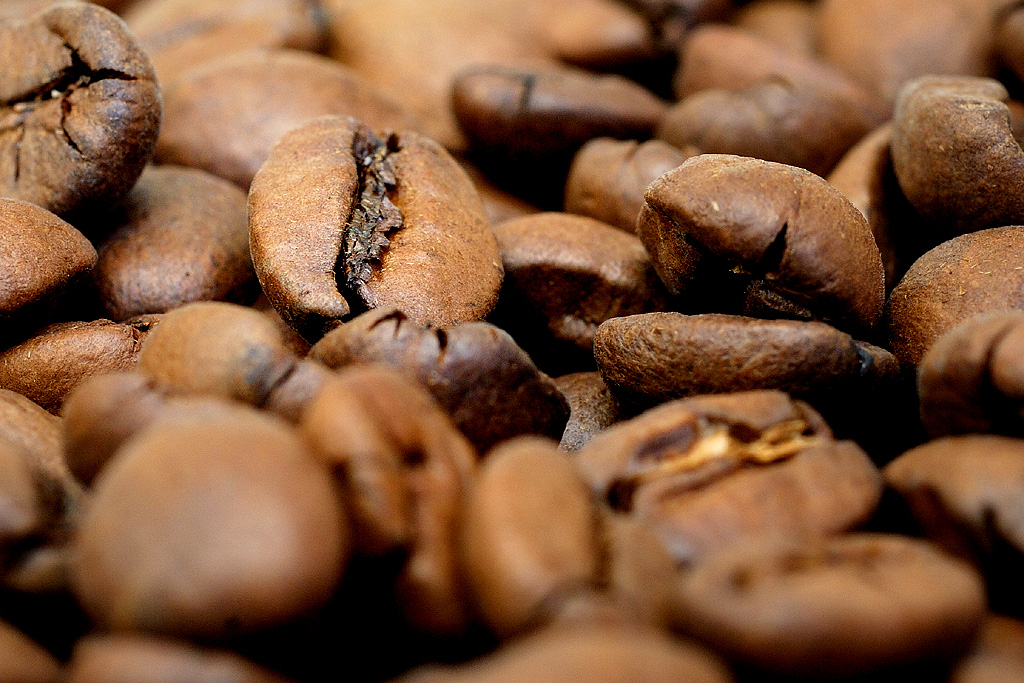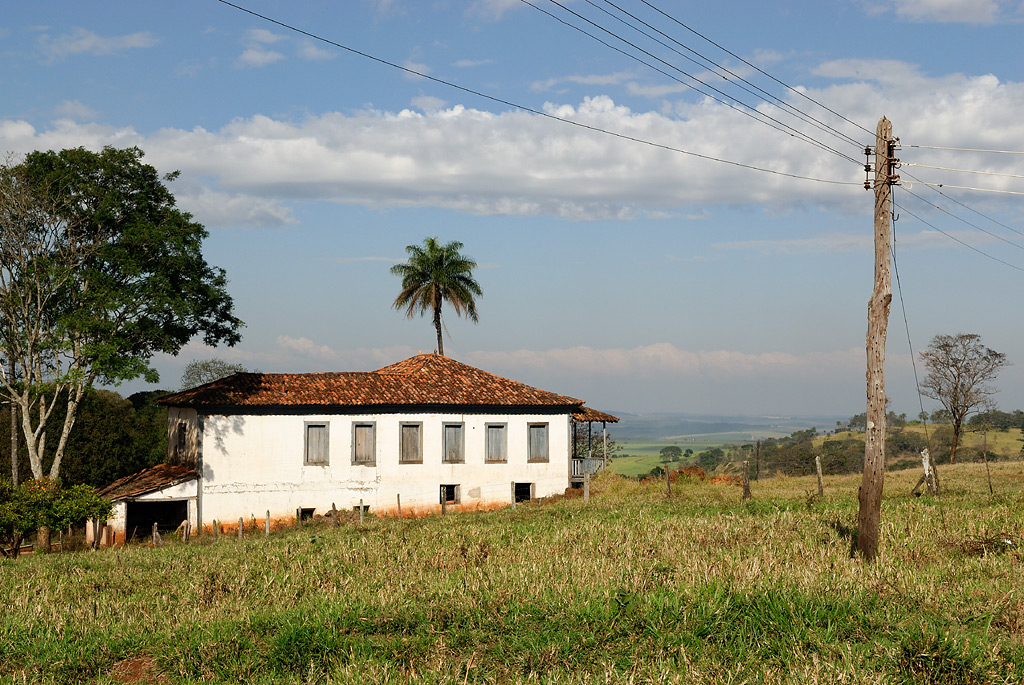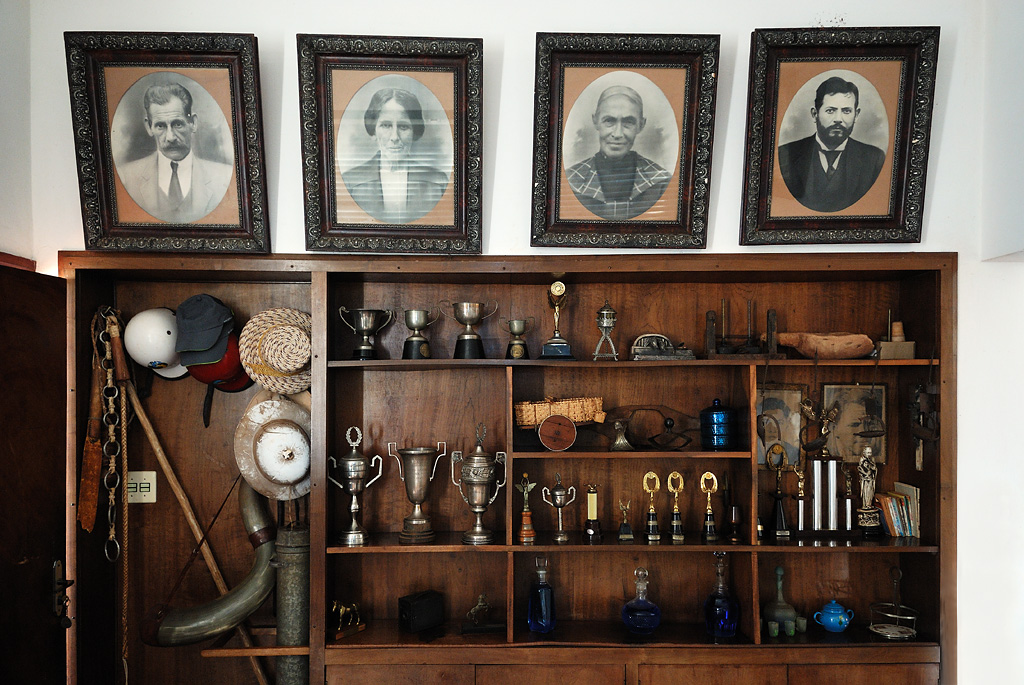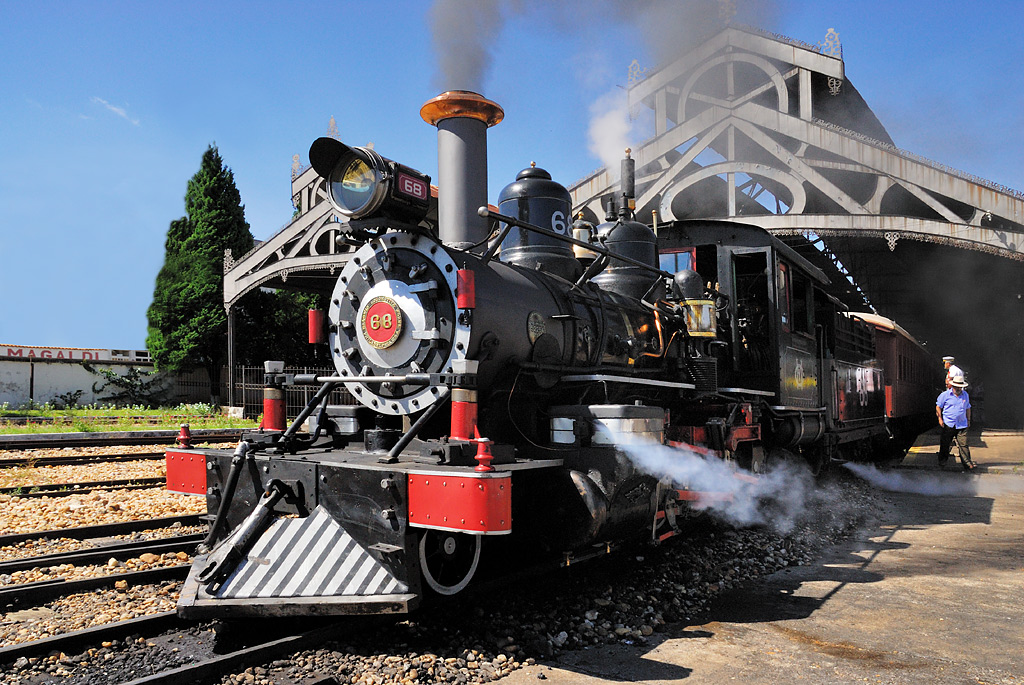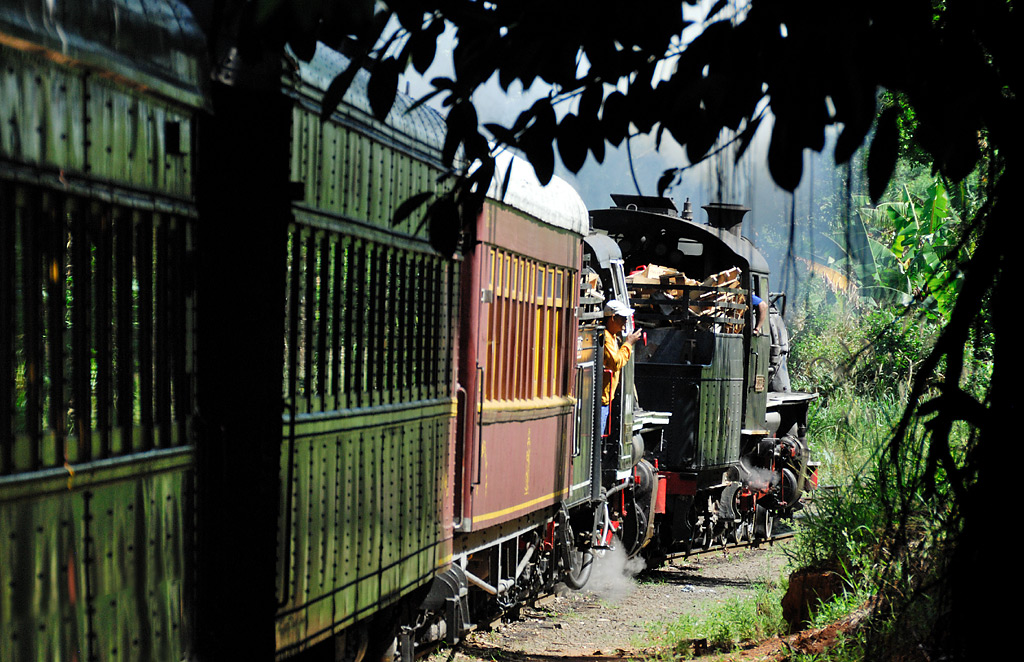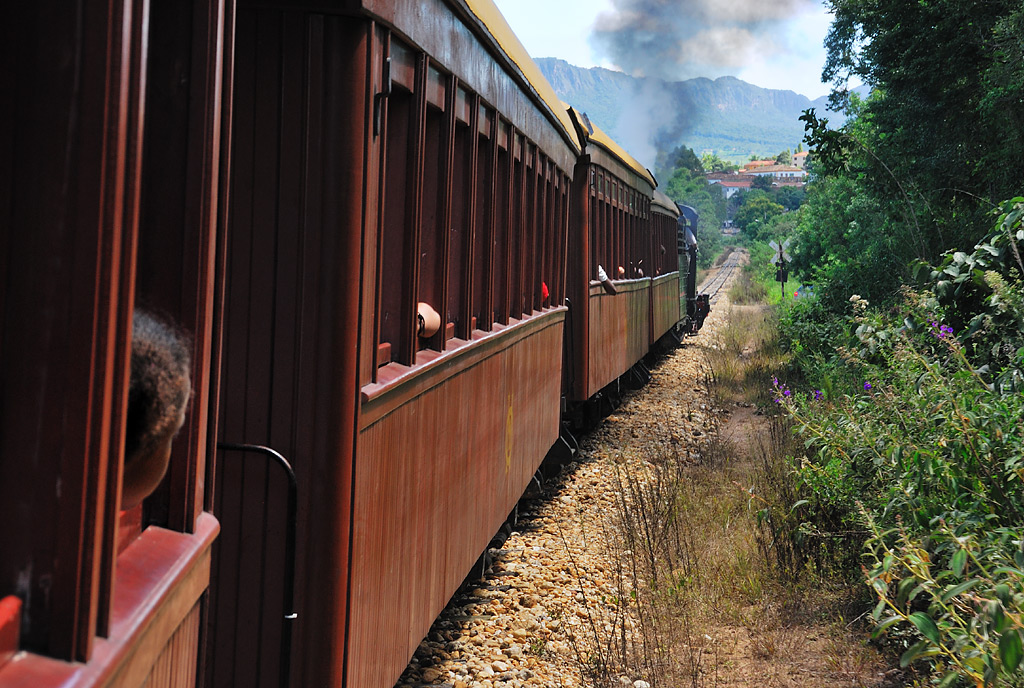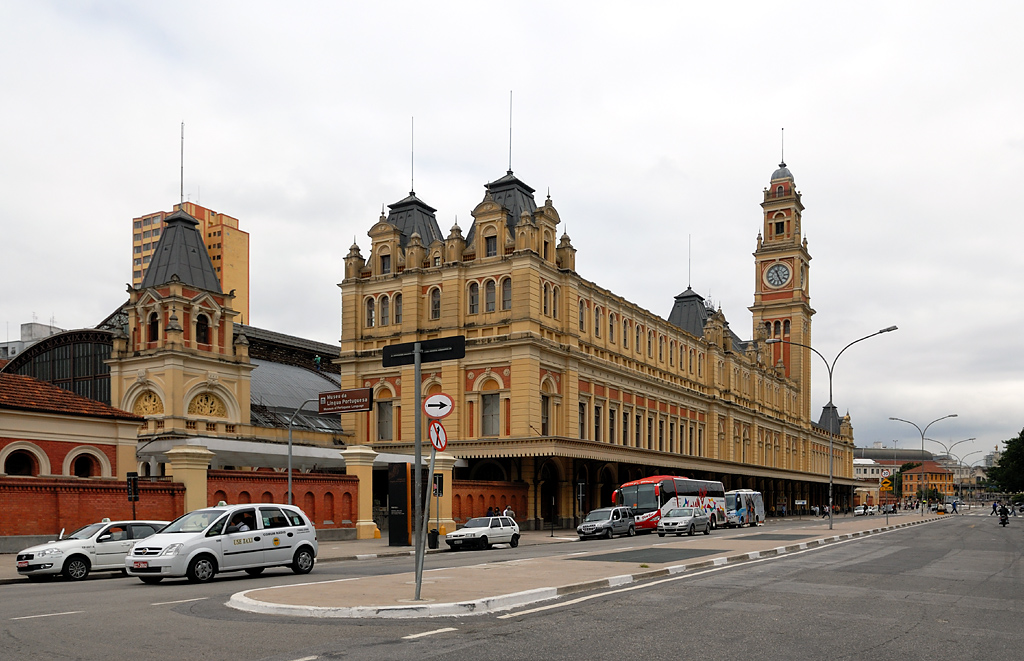A photo documentary on coffee cultivation in Brazil
- Page 5 -
| The Storage of
Coffee (A small excursion) ('O armazenamento de café' / 'Uma excursão breve') The shelf life of coffee depends a lot on its processing state. With every processing step, it reduces considerably:
|
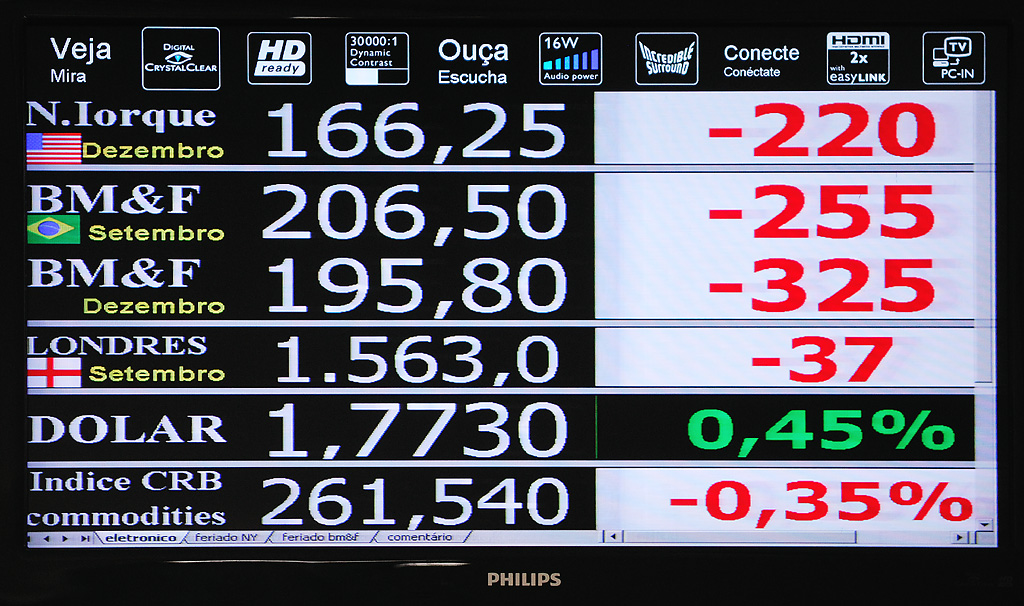 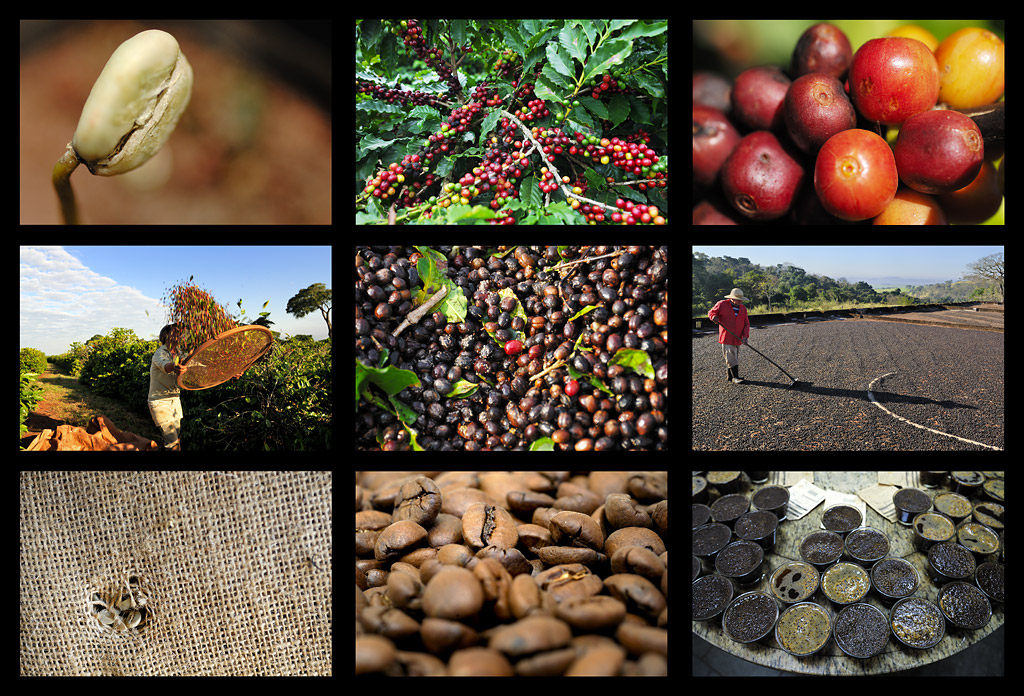 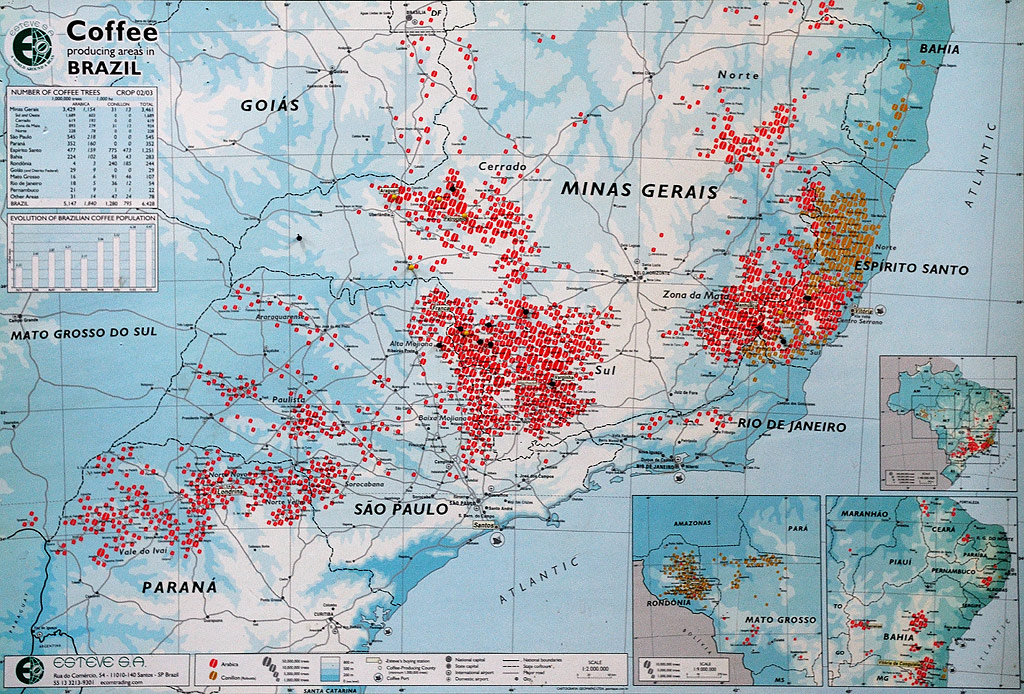 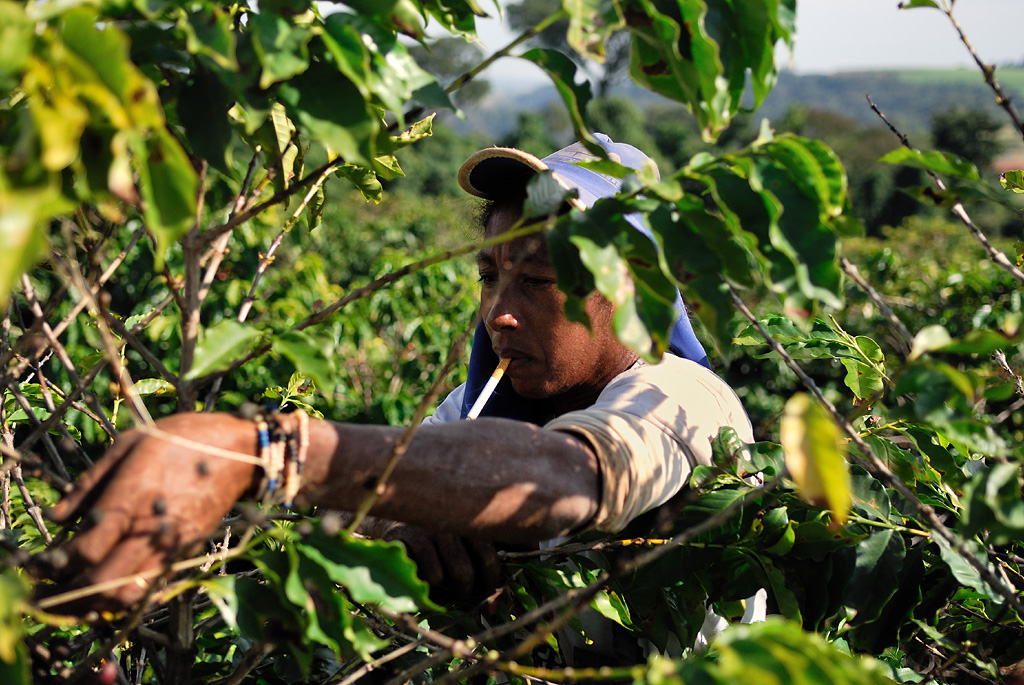 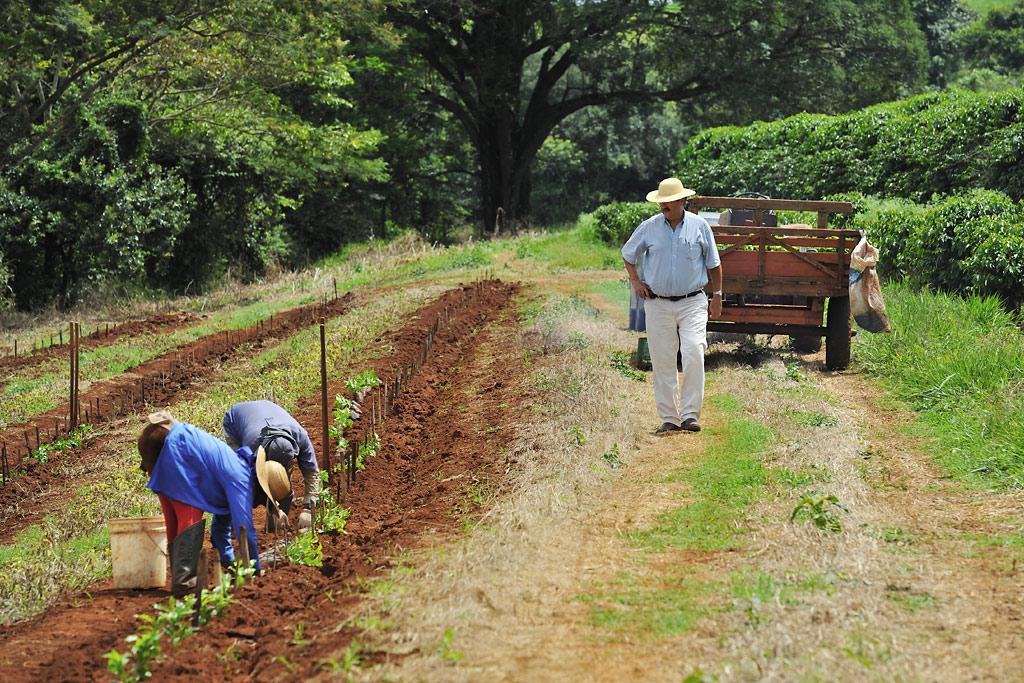 |
The International Coffee
Trade ('O comércio internacional de café') Cooparaíso supplies coffee to the whole world. That is why it supervises the coffee prices, especially on the New York Exchange, regularly on a monitor in the management floor of the Co-operative (one observes the writing of the city of New York in Portuguese; BM&F stands for BM&FBOVESPA, the stock exchange of São Paulo). The two most important coffee exchanges are New York and London: In New York Arabica and in London Robusta-Coffee is traded. Price fluctuations are a part of the daily coffee trade, and have, aside from unavoidable influences on the environment, the following causes:
The division of the coffee varieties on the stock exchange results out of, among other things, name of region of origin or port of shipment. Under “Brazil Santos NY2, 17/18” one understands for e.g, it to be a washed Arabica coffee, which corresponds to a fixed quality (=NY2) and has a specific bean size (sieve size 17/18). Only if the coffee is classified qualitatively, can the coffee in accordance to this data, be traded on the New York Exchange, also then without the above mentioned price reduction. The buyers purchase on the basis of this information, often without having seen or having tested a sample earlier. - - -
In the past various organizations had started support projects in order to ensure the coffee producers a stable income. One of these is for e.g. Fair Trade: “Traditionally the share of prices paid by the end consumer in the producing country is the lowest, from which in turn only a small part of it goes to the coffee growers and workers of the plantation. The Fair Trade, to which coffee is the classic product, attempts to take into consideration and improve this difficult economic condition of the producers in the entire trading process. This has so far led to a different allocation in the value chain and thus a total increase in price for the buyer.” (Source: Fair Trade) For more info: Click here! Average structure of the coffee price:
The underlying price of coffee in a café appears even worse for the coffee farmer and the workers, because we are still talking about only 2-3%, which remains with them. The majority of the world’s coffee trade have only a few ‘global players’: Share of Worldwide Green Coffee Volume (= Green Coffee or raw coffee):
In Germany the coffee industry is likewise an oligopoly: 6 suppliers, among which are Tchibo, Aldi, Nestle and Kraft, share 85 Percentage of the Market. This will be very similar in other countries. Information In recent times, some producers have started to dilute the ground roast coffee with up to 12% maltodextrin, caramel and other carbohydrates. The producer justified this as being flavourful. |
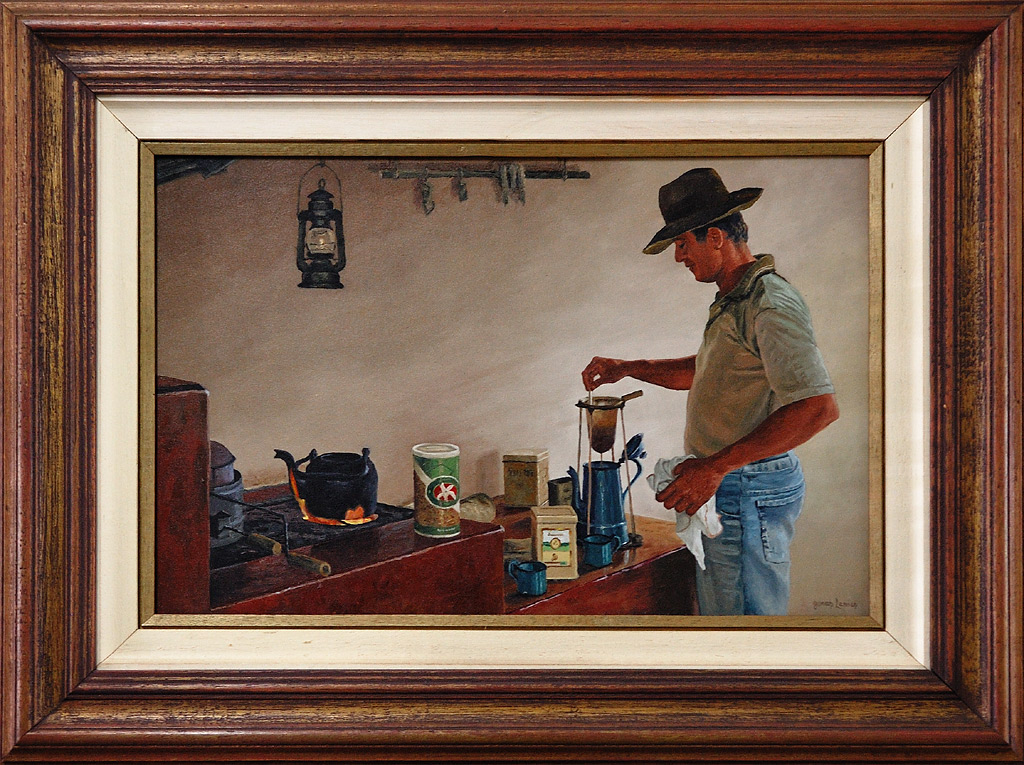
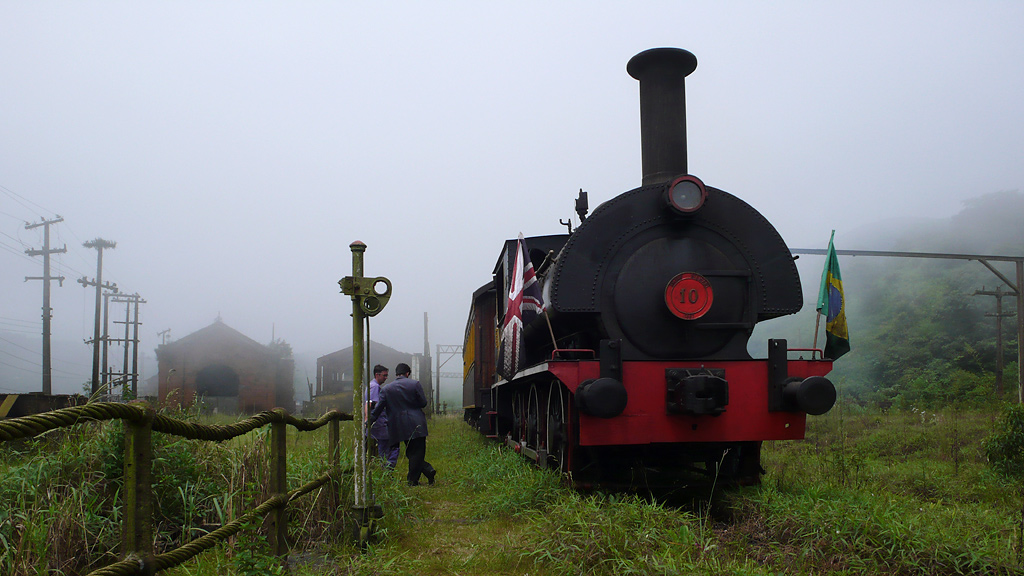
Steam railway at Paranapiacaba
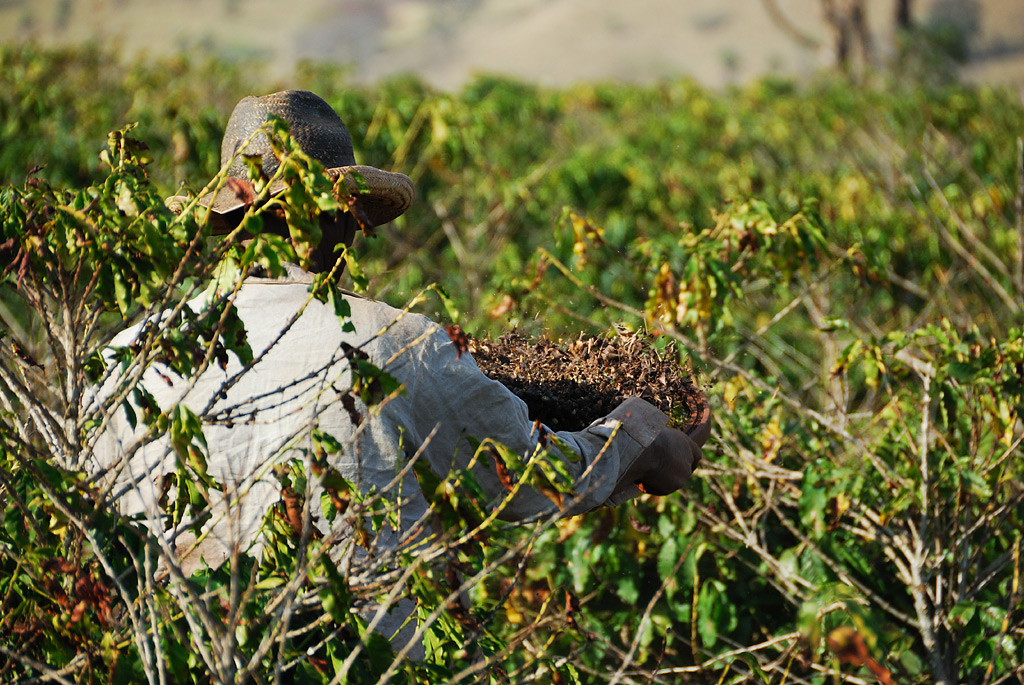
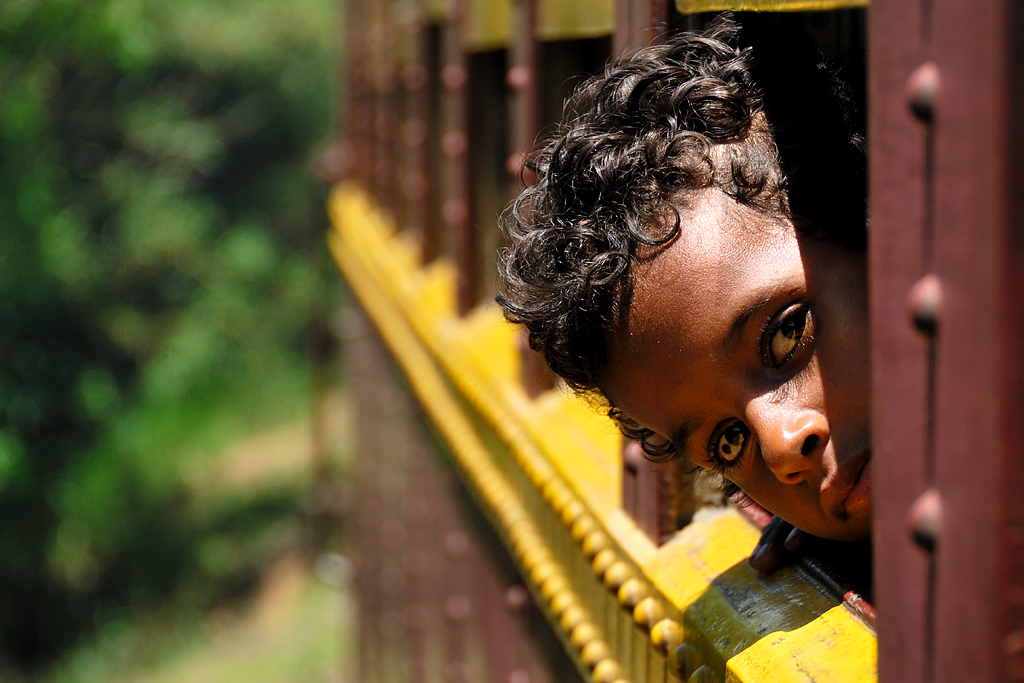
A youngster ('Moço')
| Etymology of the Word
“Coffee” ('Etimologia da palavra "café"') The European Languages have taken the name of the drink partly from original Arabic qahwah and partly from its Turkish form kahveh around the year 1600. This was however, not the name of the plant, but the drink as an infusion, whereby the word in Arabic originally meant “wine”. The Turkish form may have been written as kahvé, because the ‘Ending-H’ was always silent in Turkish. In the main European languages, there existed two types of words, like in French café or in Italian caffé, and in English coffee or in Dutch koffie. The English forms with a stronger emphasis on the first syllable has an “ŏ” in place of an “ă”, and an “f” instead of “h”. The original “v” or “w” was changed to “f”. The main reason for the existence of two different spellings is attributed to the omitted “h” in less emphasized languages and the transformation from “h” to “f” with greater emphasis in accented languages. The Germans have rectified their Koffee, which they derived from the Dutch, into Kaffee. The Scandinavian languages have adopted the French version. French etymological researchers, even today, have been unable to come to an agreement on the origin of their word café. Wherever the word “coffee” comes from, it is clear, that it has its origin in an Arabic word, be it kahua, kahoueh, kaffa or kahwa. And the people that introduced this drink had the word inculcated into their diction. This is best observed when one sees the word written in different modern languages side by side. |
Coffee Names in Various
Languages
Arabic: qahwah (coffee
bean: bun)
Basque: kaffia Breton: kafe Cambodian: kafé Chinese: kia-fey, teoutsé Chinook: kaufee Croatian: kafa Czech: kava Danish: kaffe Dutch: koffie Esperanto: kafva Finnish: kahvi French: café German: Kaffee Greek: kaféo Hawaiian: kope Hungarian: kavé Indonesian: kopi Italian: caffè Japanese: kéhi Latin (scientific): coffea Malay: kawa, koppi Persian: qéhvé (coffee bean: bun) Polish: kawa Polynesian: kapi Portuguese: café Romanian: cafea Russian: kophe Swedish: kaffee Serbian: kava Spanish: café Tamil: kapi-kottai, kopi Turkish: kahué Vietnamese: ca-phé Volapük: kaf |
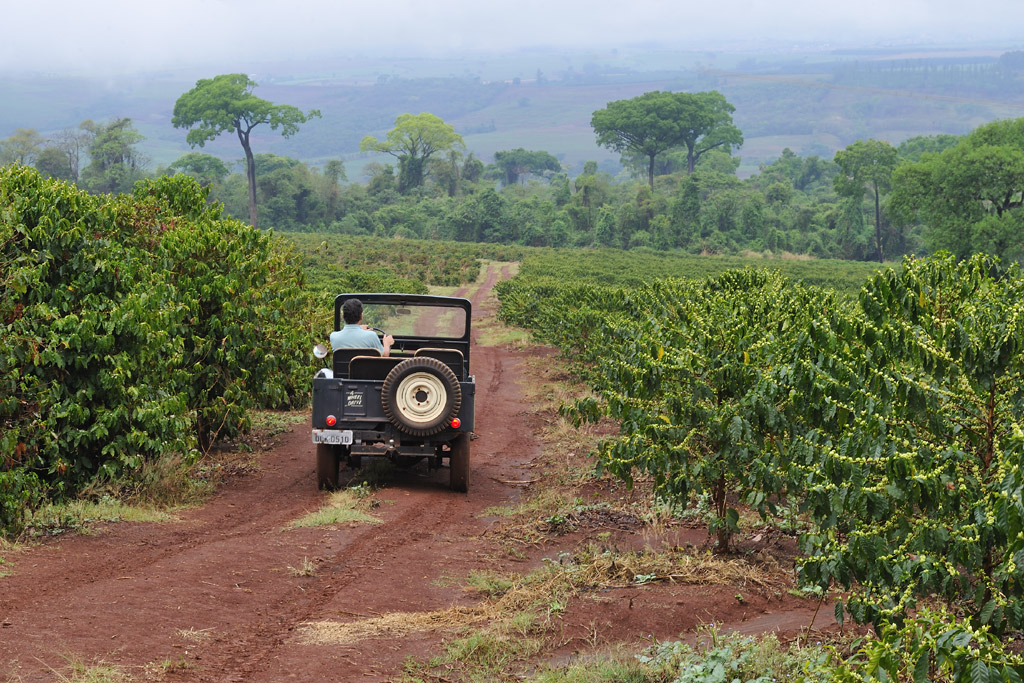
Coffee Planter Paulo on his inspection ride
I thank Cássia Villela Segato Rizzatti and Paulo Márcio Sobreira Villela with all my heart,
without whose patience, warmth and hospitality, this report would never have been possible.
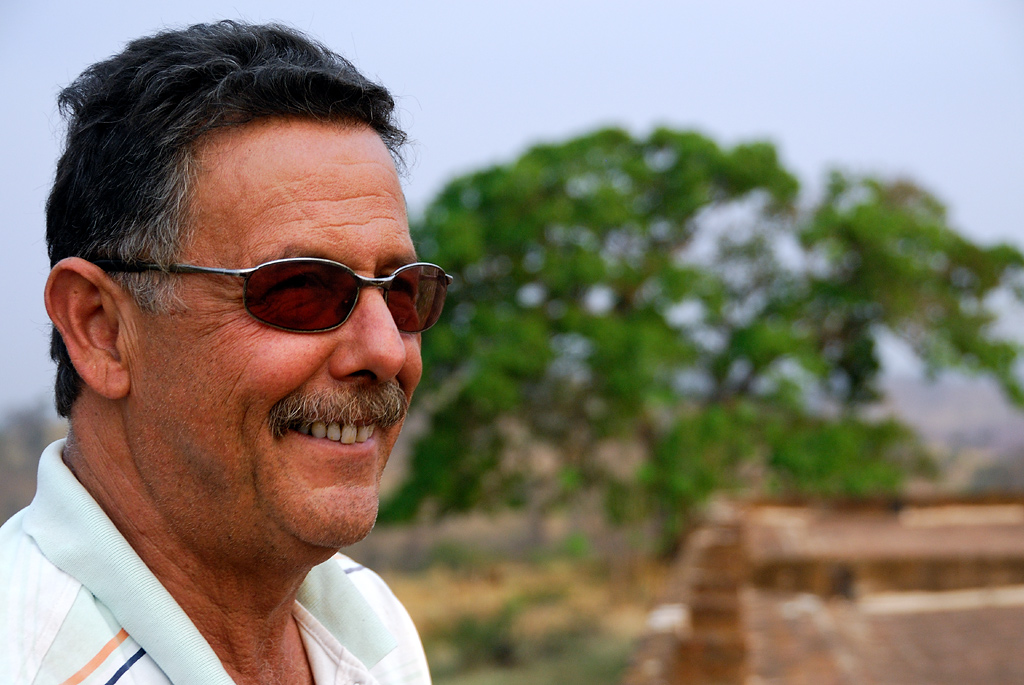
Paulo Marcio Villela, coffee planter, Tambaú
Advertisement
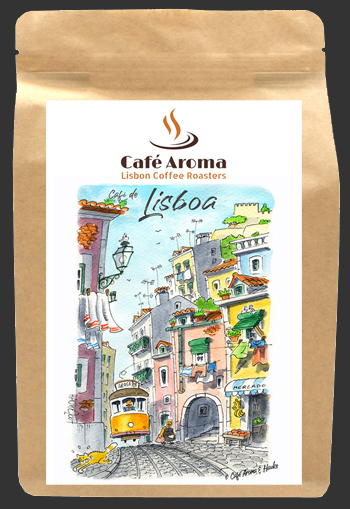
Take a piece of your holiday home with you!
Four specialty coffees from Brazil, Ethiopia and India combine to create a wonderful tastily, aromatic and
balanced coffee. The different flavours complement each other and together create a unique taste experience.
© Copyright-Note All the photographs and content in this documentary are protected by copyright law. Copying, duplication and usage of any of the photographs and content without my explicit and written approval is strictly prohibited and punishable by fine. Any violation that becomes known to me will be reported. |
[TOP]
